
The Educational Records Bureau (ERB) developed the Independent School Entrance Exam (ISEE) as an admissions tool for private schools, much like the SAT and ACT are used as admissions tools for colleges and universities. The ISEE tests a student’s knowledge of and skills in vocabulary, math, reading, writing, critical thinking, and reasoning to demonstrate to private schools the student’s capabilities and how well the student might perform under their instruction.
The ISEE is only one part of the admissions process, but it can be used as a final weight in choosing between two students who are very similar. Approach the ISEE just as seriously as any other part of the admissions process, as the results can also show where there might be gaps in the student’s education.
The ISEE features three levels: Lower Level (Applicants to 5th and 6th grade), Middle Level (Applicants to 7th and 8th grade), and Upper Level (Applicants to 9th, 10th, 11th, and 12th grade). The structure of each test is the same. However, time limitations and the difficulty of the material are dependent on the level of the test and are grade‐level appropriate.
Because the Upper Level ISEE is used for application into 9th through 12th grade, it is important to note that several of the questions are designed to be answered by rising 12th grade students. However, rising 9th graders should not panic as they too can answer many of these challenging questions.
When to Take the Upper Level ISEE
As of fall 2016, students can now take the Upper Level ISEE up to three (3) times a year but only one (1) time during pre-defined three-month periods:
- Spring semester of their 7th grade year (April to July)
- Fall semester of their 8th grade year (August to November)
- Spring semester of their 8th grade year (December to March)
Parents can also now review scores and decide whether or not they want to submit them to schools (Before fall 2016 students could really only take the exam once and that score always got sent to schools without parent review).
The bottom line is that students who are after the highest scores should take advantage of all of these three testing windows and start spring of their 7th grade year. In an ideal world, they’ll get an awesome score on that first test date and not have to worry about the subsequent dates!
This How-To Guide provides a detailed overview and test taking strategies for the Upper Level ISEE. For more detail on the individual sub-tests, including pre-made Piqosity practice quizzes, check out our other articles:
- Math Word Problem Questions on the Upper Level ISEE
- Quantitative Comparison Questions on the Upper Level ISEE
- Sentence Completion Questions on the Upper Level ISEE
- Synonym Questions on the Upper Level ISEE
- Reading Comprehension Questions on the Upper Level ISEE
- The Essay on the Upper Level ISEE
Structure of the Upper Level ISEE
What to Expect on the ISEE
The Verbal Reasoning section tests the student’s ability with vocabulary and vocabulary application. The first twenty questions are Synonyms questions that require the student to not only know the definition of the capitalized vocabulary word but also the definitions of each answer choice. The last twenty questions are Sentence Completion questions that test the student’s ability to apply one’s knowledge of vocabulary in the context of a sentence. The sentence will have either one or two blanks and the student must select the answer choice that best fits into those blanks.
The Quantitative Reasoning section, perhaps the most difficult, also features two parts: word problems and quantitative comparison questions. The questions in both sections vary in amount of work, regularly requiring little to no actual calculations in order to answer the question. The student is tested on one’s ability to reason through information and one’s comprehension of math theorems and rules. The quantitative comparison questions present two quantities and ask the student to determine the quantities’ relationship to one another (or if it can even be determined).
The Reading Comprehension section features six passages from various fields and subjects, including pieces on scientific concepts and historical information. The questions following each passage include main idea, supporting idea, inference, vocabulary, organization/logic, and tone/style/figurative language questions.
These questions test the student’s ability to understand themes and concepts within each passage, know definitions of words within a particular context, and to draw conclusions from content not explicitly stated in the passage.
The Mathematics Achievement section tests a student’s ability to solve questions concerning Numbers and Operations, Algebra, Geometry, Measurement, Data Analysis and Probability, and Problem Solving (according to standards by the National Council of Teachers of Mathematics). As opposed to the Quantitative Reasoning section, students may need to do calculations to solve the questions in the Mathematics Achievement section, and students will need to be familiar with mathematical terminology. For measurement conversions, students do not need to have memorized conversions in the U. S. standard system. Conversions are given in questions that require them, but conversions within the same unit in the metric system are not.
The Essay gives the student the chance to demonstrate how well the student can organize one’s thoughts and convey an argument or statement within a short essay in response to a prompt. The prompt is grade‐level appropriate and the student will be able to answer the prompt pulling from one’s experiences and education. The student will have two pages of lined paper on which to write the essay, and the student must use an ink pen. The student may write the essay in cursive or print.
The ISEE, in a sense, is similar to the SAT, College Board’s college admission test, in structure and difficulty. While the SAT no longer contains quantitative comparison questions, the difference between the two exams is how each one tests your abilities in the context of your education. The ISEE tests your previous knowledge, what you have only just learned, and concepts you (probably) have never seen before. The SAT tests what you should have already been taught and whether or not you understand what you have been taught.
You are not allowed to use a calculator for the math sections of the ISEE. You will not be provided with scratch paper; all work is to be done on the test booklet. You may only take the ISEE once every sixth months, and you must take the ISEE at an approved testing facility with a licensed ISEE proctor (generally, you will take the ISEE at your most desired school). Most importantly, you must take the ISEE as part of the admissions process and may not take the ISEE as practice.
Un-Scored Portions of the ISEE
The fifth section of the ISEE is always the Essay, and it is the only section that is not scored. This does not mean that the Essay is not as important as the other scored sections. A copy of your Essay is sent to every school you designate to receive your ISEE results. Schools can then compare your ISEE Essay to your application essays/short answer responses to A) see the differences in your ability to convey your thoughts under time constraints versus little to no time constraints and B) see if you or someone else wrote your application essays/short answer responses. The ISEE Essay may also be used as a final weight when the school is choosing whether or not to award admission to the student.
Each of the four multiple‐choice sections (Verbal Reasoning, Quantitative Reasoning, Reading Comprehension, and Mathematics Achievement) will have a certain number of questions that are not scored. These questions are experimental and are used to develop future questions for the ISEE. You will not know which questions are not scored, and it is never a good idea to assume that the most difficult questions you face on the ISEE are experimental. It is best to assume that every multiple‐choice question is scored.
Scoring the ISEE
Once you have completed your ISEE, your answer sheet will be submitted for scoring. Each of the four sections on the ISEE will receive four scores:
- Raw Score
- Scaled Score
- Percentile Rank
- Stanine
The Raw Score is the number of questions you answered correctly. There are no deductions for incorrect answers on the ISEE, and no points are earned or deducted for skipped questions. Therefore, it is in your best interest to have an answer filled in for all questions on the ISEE. It is important to note that no matter how you fare on your ISEE, you cannot ultimately fail the test.
Like the SAT and ACT, there are many versions of the ISEE in circulation, which means that the version of the ISEE you take will be different from the version of the ISEE the student sitting next to you is taking. This also means that your Raw Score of 22 for your Verbal Reasoning section will be different from his Raw Score of 22. Thus, the ERB converts your Raw Score into a Scaled Score, ranging from 760 to 940. These Scaled Scores mean the same thing across all versions of the ISEE and are used to compare you against the Norm Group to determine your Percentile Rank and Stanine.
Your Percentile Rank represents how well you did in comparison to the Norm Group, such as scoring a 50th Percentile Rank means you scored better than 50% of the Norm Group. The Norm Group is all students at your grade level (ex. all 8th graders) who have taken the ISEE over the last three years. However, you will not be compared to those students who are in your grade for the year you take the ISEE. In other words, you will not be compared to the student taking the test next to you.
Essentially, your stanine score is an easy way to sum up your child’s statistical place on a bell curve. Short for “standard nine,” the stanine takes the entire Norm Group and plots their results along a Normal Curve/ bell curve (illustrated below). Those results are further subdivided into nine intervals. Each bracket represents 0.5 standard deviation with the exception of the first and last brackets which are the remainders. Note from the graphic below that stanines of 4, 5, and 6 represent the bulk of the Norm Group or average performance while scores of 7, 8, and 9 represent exceptional scores.
General Test Taking Strategies
Know the Format of the ISEE
Students need to understand what each section of the ISEE requires, the time limitations for each section, and the types of questions being asked. You will have more confidence in your ability to tackle the ISEE when you know exactly what to expect from the test.
Know and Manage Your Time Limitations
Students need to know how much time is allotted to each section of the ISEE, and how much time they should spend on each question. Here is an example of how you might spend your time:
As you prepare for the ISEE, pay close attention to how long you spend on each part of the ISEE. Some questions will take you longer than others, and some questions will not take you very long at all to answer. If you are a slow reader, then you may need to allot more than 3 minutes per passage, but you also need to realize that this allows for less time to answer the questions. Knowing how long it takes you to complete certain types of questions will help you formulate a system to answering all questions on the ISEE.
Have a Systematic Approach to Answering Questions
By having a system, a specific way of answering questions, you will allow yourself a greater chance of completing the ISEE efficiently and accurately. You will also overcome the overwhelming feeling that a standardized test can cause, particularly one that is long and difficult like the ISEE. Instead of staring at a question for several minutes confused about what to do with it, you will know exactly what tools are at your disposal and how you should respond to any question on the ISEE.
Your greatest tool in your systematic approach is the ability to know when you should skip a question and come back to it later. The nice thing about each section of the ISEE is that you do not have to answer the questions in order. When you skip a question on a standardized test, it is a good idea to circle the question (or some other type of indicator) on your test booklet, but not on your answer sheet. Extra marks on your answer sheet will corrupt your results. You may do two things when you skip a question:
- Bubble in an answer that looks correct or
- leave no answers bubbled.
Because there are no deductions for incorrect answers, it is best to have an answer bubbled in for every question. So, following the first option is best for some test takers.
Educated Guessing
Despite all your efforts and strategies, there might be some questions that you simply don’t know how to answer. Do not let these instances overwhelm or discourage you, as there are still some steps you can take to provide an answer. You may have heard that if all else fails, you should choose the same answer choice for your guesses, such as answer choice B. Ignore this advice. Standardized test makers do not have a favorite answer choice that they will pick over others, and you have the same chance of being correct picking B as you do picking A, C, or D.
Instead, attempt to increase your chances at a correct answer by reducing your selection of answer choices. In other words, the process of elimination:
Using Test and Answer Booklets
Though you are not given any scratch paper, you are allowed to write all over your test booklet. Make liberal use of this allowance! However, your answer booklet should be free of any extra markings, aside from bubbled answers and your written essay on the two provided pages.
Plus, the ERB doesn’t care if you incorrectly marked an answer on your answer booklet. A wrong answer is a wrong answer, and you will not be given the option to retake the ISEE. So, make sure your answers are clearly and cleanly bubbled on your answer booklet. For example:
—
This How-To Guide is adapted from “Upper Level ISEE Prep Guide with 6 Full-Length Practice Tests, 3rd Edition” by Stephen Hayes and the Staff of General Academic. You can buy it on Amazon for about $50.


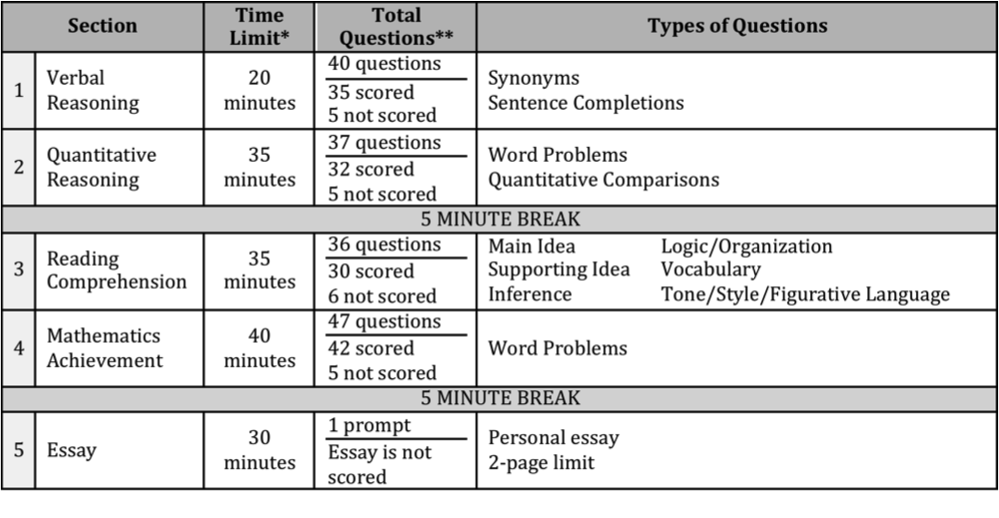
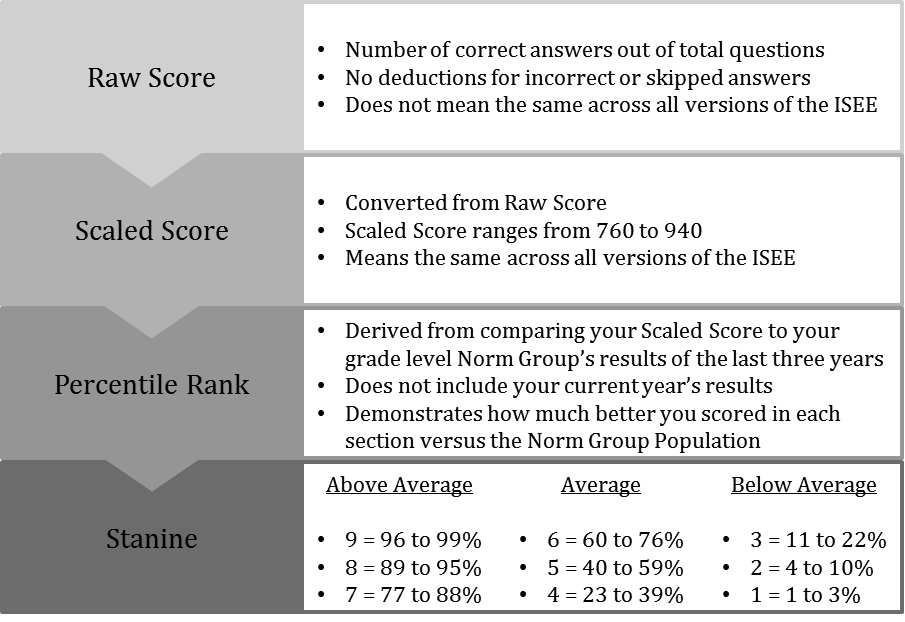
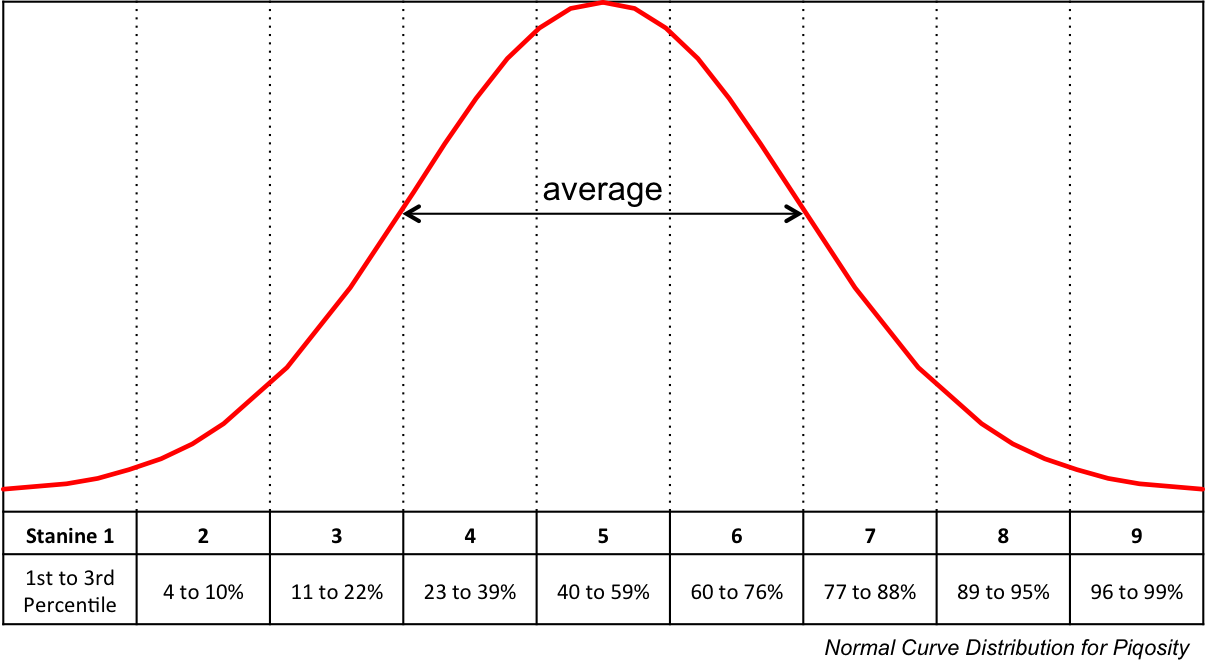
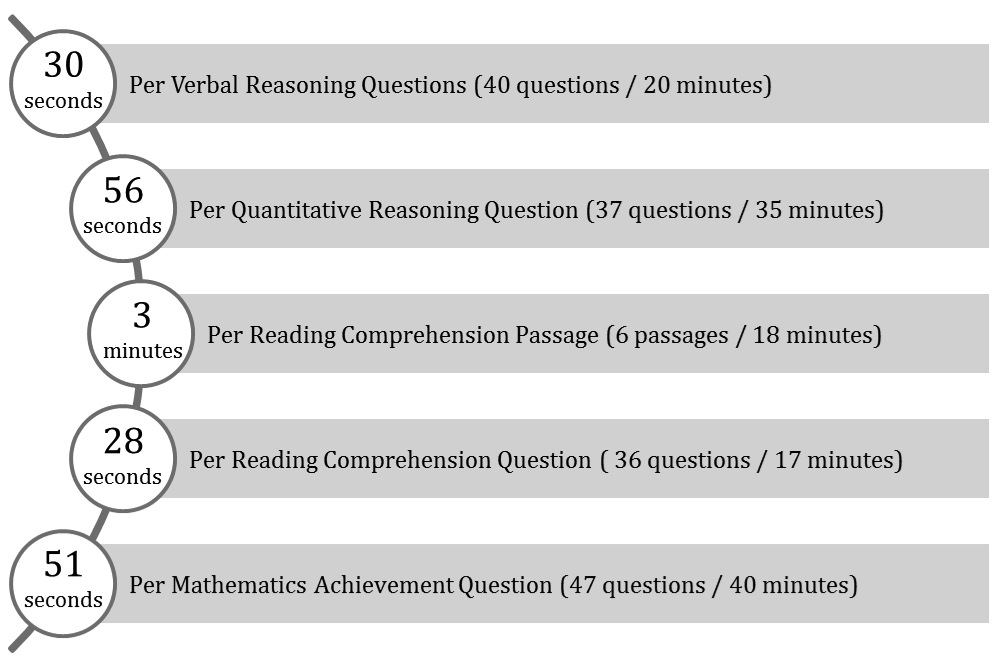
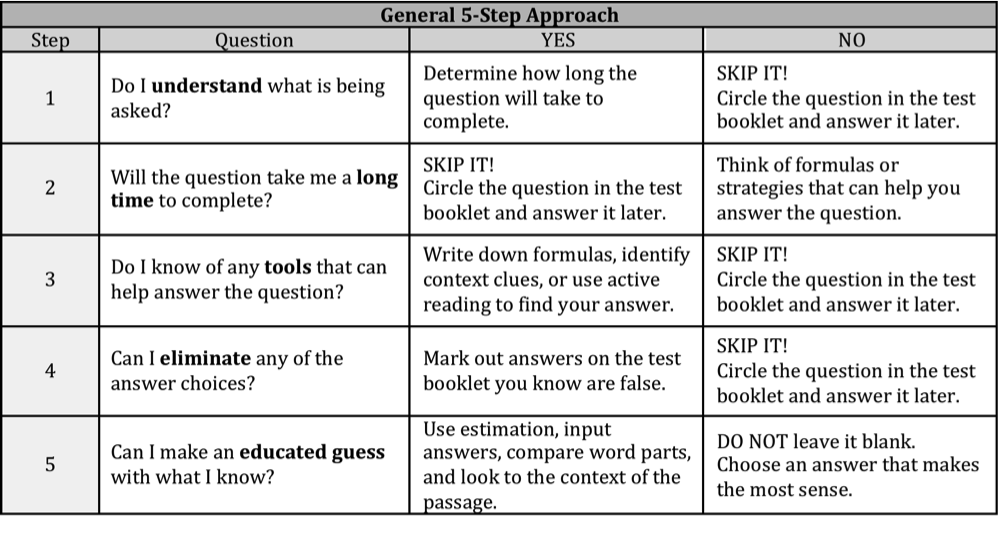
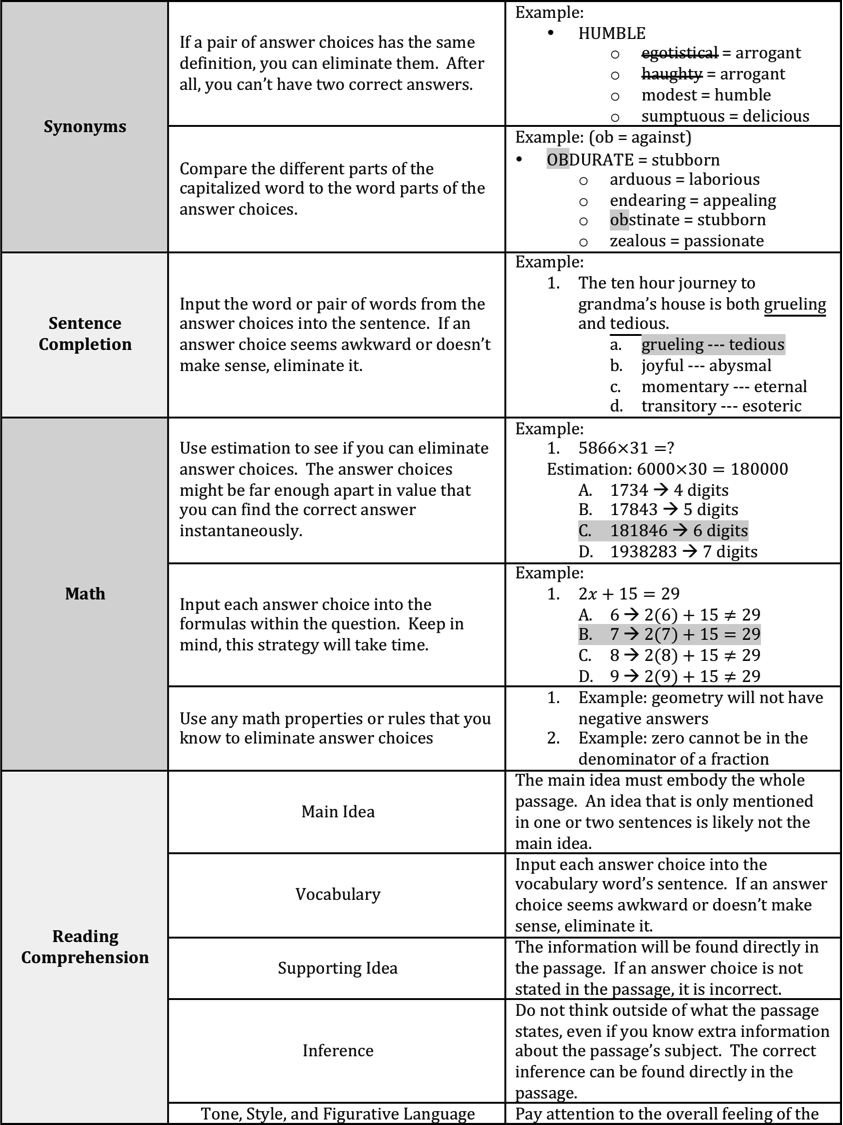
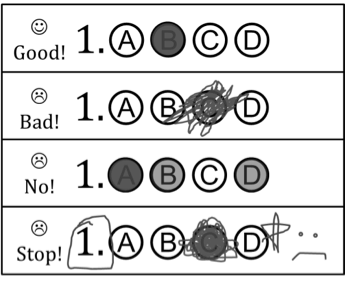


[…] of 18.77 full-length practice tests for this popular independent high school admissions exam (click here for more information about the ISEE including test-taking strategies). The practice questions are separated into three primary […]
[…] This How-To Guide is adapted from “Upper Level ISEE Prep Guide with 6 Full-Length Practice Tests, 3rd Edition” by Stephen Hayes and the Staff of General Academic. You can buy it on Amazon for about $50. You can also read more about the Upper Level ISEE in, “Overview and Test-Taking Strategies for the Upper Level ISEE.” […]